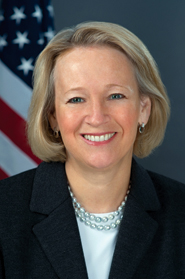Whether you were a trader in 2009 or an investor, the highs and lows were enough to give anyone an excuse to reach for the medicine cabinet. The markets crashed big time in the first quarter, and rebounded from early March to early November by about 55 percent. At presstime, the Dow Jones Industrial Average was up roughly 16 percent for the year.

Besides the market’s wide mood swings and the conviction of Ponzi-scheme artist Bernard Madoff, who received a 150-year sentence, it was really the year of the regulator-and for the regulator’s overseer, Congress. Politicians injected themselves into a number of trading questions relating to order types, trading styles and venues, like dark pools. Many in the trading industry scratched their heads in disbelief when some critics took positions on complex trading issues, wondering if these pundits knew their high-frequency trade from their flash order. The critics included Congress, editorial commentators and the investing public.
Still, it was Securities and Exchange Commission Chairman Mary Schapiro and her staff who had their hands full. All the buzzwords in ’09–like high-frequency trading, co-location, flash orders, dark pools and short selling–fell into their lap and needed to be addressed. The SEC is expected to issue a concept release on some of these issues. Against this backdrop, Traders Magazine presents its top stories of 2009.
Washington on the Warpath
This past year, Washington went on the warpath against Wall Street. And it wasn’t limited to over-the-counter derivatives regulation or executive compensation practices. The securities industry’s market structure also became one of the bad boys making headlines around the nation, fueling a regulatory crackdown of sorts.
The U.S. Congress is, arguably, driving the agenda, with Senators Charles Schumer, D-N.Y., and Ted Kaufman, D-Del., prodding the SEC to act. In addition, market participants such as the securities exchanges are raising their voices and telling the Securities and Exchange Commission what changes they would like to see implemented in the marketplace.
The SEC is now casting a wider net over a range of practices, from short selling to flash orders and co-location strategies. Early next year, it will issue a long-awaited concept release that raises questions about how high-frequency trading and dark pools may be affecting the marketplace. This is being done as Congress stands over the SEC, cracking the whip and lashing out at dark pools and other trading features it has decided it doesn’t like.
The SEC’s concern is investor protection and investor confidence. One of its gauges for determining if the markets are fair and transparent is whether two-tiered markets, in which some people have access to information that others don’t, are developing. SEC Chairman Mary Schapiro made clear in October that her agency is on the lookout for practices that create "a risk of private markets and two-tiered access to information." She took the SEC’s reins last January, after the near-meltdown of the markets as a result of the subprime crisis.
Senators Schumer and Kaufman have excoriated Wall Street for what they see as market structure failings involving short selling, flash orders, dark pools, high-frequency trading, naked access, co-location and market surveillance. The list of woes, in their eyes, is long and attributable to weak oversight and loosey-goosey rules. They have taken turns arguing that the markets are unsafe and in need of greater oversight.
Sen. Kaufman said in a speech on the Senate floor last month that the stock market has three "deadly ingredients: rapid technological development, lack of transparency and a lack of regulation." He added that "we have no effective regulation in these markets."
Many in the trading industry think these sorts of strongly worded statements are unfair. From the CEOs of Nasdaq OMX Group and NYSE Euronext on down, they argue that the markets functioned well during the financial crisis while other asset classes froze up. The changes needed in equities, they say, are far less drastic than the grim scenarios presented as some would suggest.
Still, the SEC under Schapiro has been busy. In the trading arena, the agency proposed a series of short-selling constraints in the spring, although by early last month it still had not reached a conclusion about which course of action to pursue. The SEC worked on a sponsored-access proposal from Nasdaq, designed to reduce risks associated with broker-dealers’ customers accessing market centers directly, and recently decided to create another layer of controls through a "Commission-level" rule, due out next year.
The Commission cracked down on flash orders, proposing a ban on these order types in September. The next month, it proposed several limitations on the ability of dark pools that aren’t completely dark to actively search out additional flow. It proposed real-time reporting of dark pool executions if the trade isn’t a block. On the co-location front, the SEC is working with exchanges to structure general rules around co-lo services to ensure that these offerings are fair and open to those who want co-location.
Finally, the SEC is probing high-frequency trading, which accounts for between half and two-thirds of the industry’s volume. The SEC is doing this despite the arguments of exchanges and broker-dealers that high-frequency firms are today’s liquidity providers, tightening the bid-offer spread and enabling investors to move in and out of positions more easily. The Commission plans to implement a large-trader reporting system for high-frequency firms that aren’t brokers. Schapiro said her agency is also discussing whether to ask Congress for "additional legislative authorities needed to address new types of market professionals whose activities may not be sufficiently regulated."
This is one of 10 stories in the December issue of Traders Magazine.




